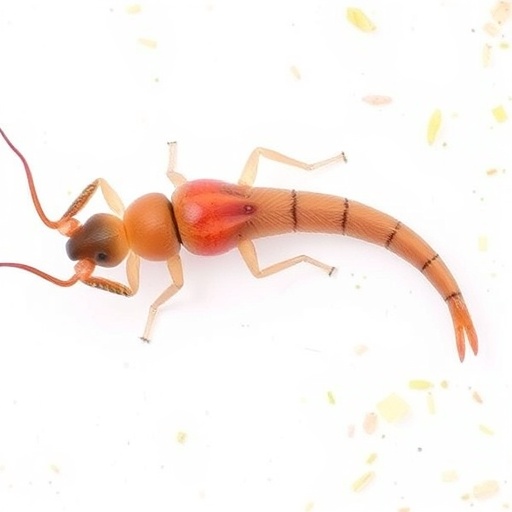In the constantly evolving field of genetics and developmental biology, the identification and functional characterization of gene families underpinning critical biological processes is paramount. A recent groundbreaking study by Ding, Li, Wang, and colleagues sheds light on the dynamic interplay of the dmrt gene family in the gonad development of Plectropomus leopardus, a prominent group of reef fish known for their role in maintaining the balance of marine ecosystems. This research promises to offer pivotal insights into the complex mechanisms governing sexual differentiation and reproductive development in teleost fishes, which constitute a substantial portion of global fisheries.
The dmrt gene family is renowned for its crucial involvement in sexual differentiation across various taxa, with mechanisms that can differ intricately between species. In Plectropomus leopardus, the focus centers around the dmrt2a gene, which has emerged as a significant regulator of oocyte development. This is particularly intriguing as understanding the genetic underpinnings of gonad development can have far-reaching implications, not only for evolutionary biology but also for aquaculture and fisheries management.
In their comprehensive genome-wide investigation, the authors employed advanced genomic sequencing techniques that facilitated the identification of multiple dmrt family members. The diversity and evolutionary trajectory of these genes were scrutinized, revealing a complex dynamic inherent to gene duplication and functional divergence. The findings suggest that these genomic features contribute to the adaptability of gonadal structures, potentially allowing for variations in reproductive strategies among individuals.
What makes this research even more critical is its potential to illuminate the evolutionary significance of the dmrt family. By analyzing gene expression patterns during different developmental stages of Plectropomus leopardus, the authors established a timeline of when specific dmrt genes are activated. This temporal expression not only highlights the genes’ regulatory roles but also underscores their importance in synchronizing oocyte maturation with environmental cues, a vital factor for species that reproduce in highly variable marine conditions.
In addition to providing foundational knowledge on the genetic basis of sex determination and gonadal development, this study raises intriguing questions about how external factors, such as temperature and habitat conditions, can influence dmrt gene expression. The intricate relationship between genes and the environment poses broader questions about resilience in marine populations in the face of climate change, overfishing, and habitat destruction.
Moreover, the implications of this research extend beyond theoretical knowledge; they touch on practical applications within fisheries and aquaculture. Understanding the genetic determinants of sex in Plectropomus leopardus can aid in the development of strategies aimed at optimizing breeding programs. Such advances could contribute to enhanced yield and sustainability in aquaculture practices, addressing global food security challenges.
By elucidating the mechanisms through which dmrt2a regulates oocyte development, this research further enriches our understanding of reproductive biology. It opens avenues for future studies aimed at exploring gene-environment interactions in other economically important fish species. The methodologies employed here could serve as a blueprint for similar investigations targeting gene families across different organisms, emphasizing the relevance of dmrt genes in the broader context of genetic research.
The findings of Ding and colleagues underscore the importance of trans-disciplinary approaches in modern biology, integrating genomic data with developmental studies to form a holistic picture of biological processes. The emergence of new tools and technologies in genomics allows researchers to dissect intricate biological pathways that were previously obscured, paving the way for innovative solutions to pressing ecological and economic challenges.
In conclusion, the study of the dmrt gene family in Plectropomus leopardus offers a significant leap forward in our understanding of gonad development. As scientists continue to unravel the intricate web of genetic regulation in reproductive systems, it becomes increasingly clear that such research not only enhances scientific knowledge but also arms us with the tools necessary to combat emerging challenges in biodiversity conservation and sustainable fisheries.
The profound implications of this study reverberate through the worlds of both science and industry, urging all stakeholders—researchers, conservationists, and policymakers—to engage with and apply the findings for the benefit of marine ecosystems worldwide. As we move forward, it will be vital to foster collaborative efforts that bridge scientific inquiry with practical applications, ensuring that the lessons learned from our genetic investigations are translated into actions that protect both biodiversity and the livelihoods dependent upon it.
As we advance into an era where genetic research continues to redefine our understanding of life, the study of the dmrt gene family stands out as a compelling example of how we can harness genomic knowledge to foster resilience against environmental challenges. This pivotal research encourages us not only to investigate the genes that shape our biological inheritance but also to appreciate the responsibility we carry in preserving the intricate balance of life within our oceans.
Subject of Research: Investigation of the dmrt gene family and its role in gonad development in Plectropomus leopardus.
Article Title: Genome-wide investigation of the dmrt gene family reveals new insight into the gonad development in Plectropomus leopardus: dmrt2a regulates the development of oocytes.
Article References:
Ding, H., Li, P., Wang, J. et al. Genome-wide investigation of the dmrt gene family reveals new insight into the gonad development in Plectropomus leopardus: dmrt2a regulate the development of oocytes.
Biol Sex Differ 16, 84 (2025). https://doi.org/10.1186/s13293-025-00769-6
Image Credits: AI Generated
DOI:
Keywords: dmrt gene family, gonad development, Plectropomus leopardus, oocyte regulation, genetic research, aquaculture, fisheries management, reproductive biology, evolutionary biology.
Tags: dmrt gene family in fishevolutionary biology of reef fishfisheries management and geneticsgene families in developmental biologygenetic regulation of oocyte developmentgenome-wide sequencing in marine speciesgonad development in Plectropomusimplications for aquaculture practicesinsights into teleost fish reproductionmarine ecosystem balance and geneticsPlectropomus leopardus reproductive biologysexual differentiation mechanisms in teleosts





